- You are here:
- Home »
- Training With a Ball »
- 2v2+GK Explosive Sprints
2v2+GK Explosive Sprints
By Philip Cauchi
Development of the soccer domains:
Technical: Quality of technical actions performed at speed and under opposition pressure. Turn with the ball, dribble at speed, pass with accuracy, oriented first touch and finish at goal with accuracy.
Tactical: In the offensive phase, provide quick support in attack while timing forward runs. Follow up shots for rebounds while attacking both the first and second post areas. In the defensive phase, recover quickly to prevent the attackers from concluding at goal.
Mental: In the offensive phase, keep focused while performing attacking actions under pressure from opponents. In the defensive phase, the players must track back and defend with a positive attitude of preventing the opponents from scoring.
Physical: Applied soccer actions performed at speed to either attack or defend.
Social: Collaborate and communicate (verbal and non-verbal) with teammate to either score or defend.
Training load:
Sets: 2.
Repetitions: 6.
Duration each repetition: 3 to 4 seconds.
Recovery between repetitions: 30 to 40 seconds (thus working at a ratio of 1:10).
Recovery between sets: 3 minutes (light technical activity may be performed during this period thus accelerating the recovery process).
N.B. The training load should be adjusted according to the physical level and maturity of the players. Players should be positioned within positions and situations they typically experience during a match.
Periodization: The exercise should be carried out immediately after the warm-up when the players are fresh and two days before match day (MD-2).
Targeted energy system: Anaerobic alactic.
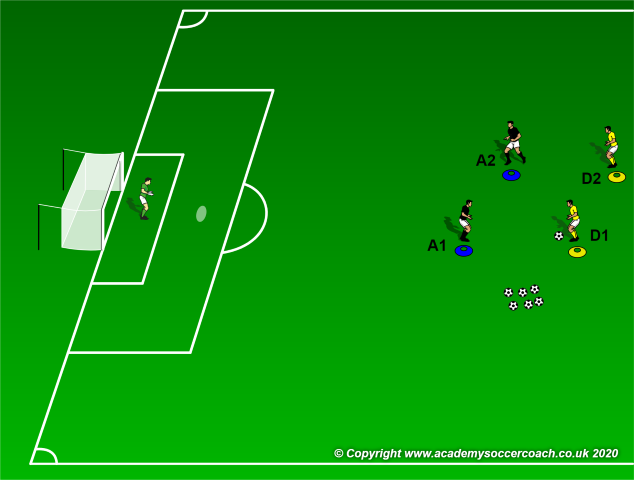
Attacker A1 starts facing the defender D1 two yards apart. Defender D1 starts with a ball at his feet. Defender D2 starts slightly behind and three yards away from defender D1. Attacker A2 is positioned 2 yards in front of defender D2.
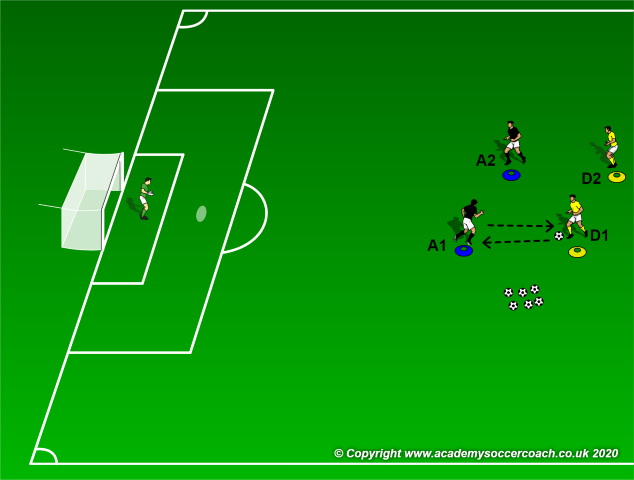
Attacker A1 and defender D1 pass the ball back and forth to each other.
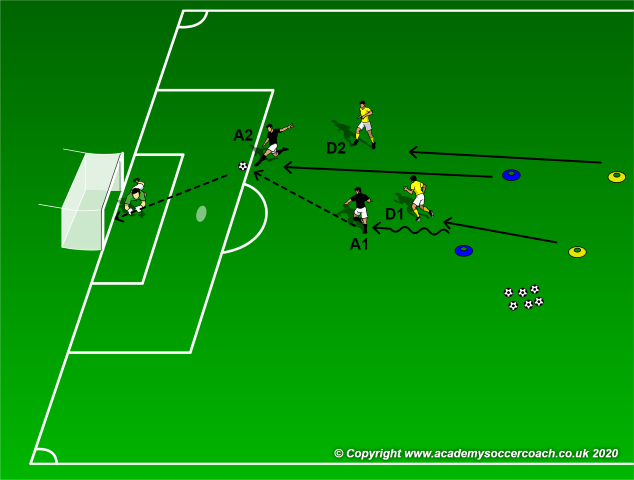
Attacker A1 turns at his discretion to dribble towards the goal. At this moment all the other players become active. Attacker A1 must pass the ball to attacker A2 to finish on goal. The attackers have a time limit to score from the moment attacker A1 turns to attack the goal. The offside rule is in effect.
Progression 1:
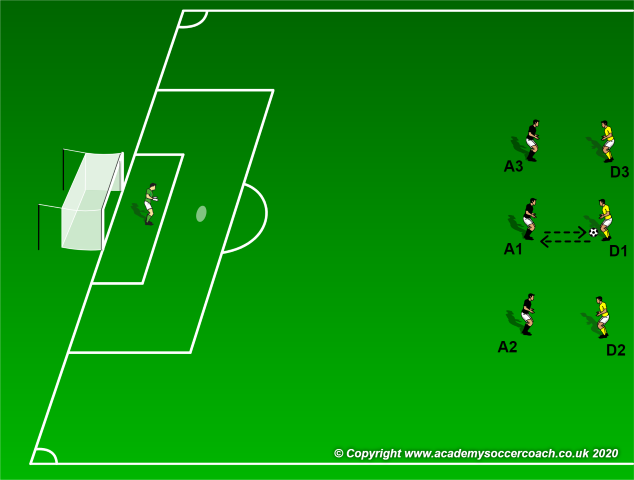
Now we play 3v3 with the offside rule is in effect.
Progression 2:
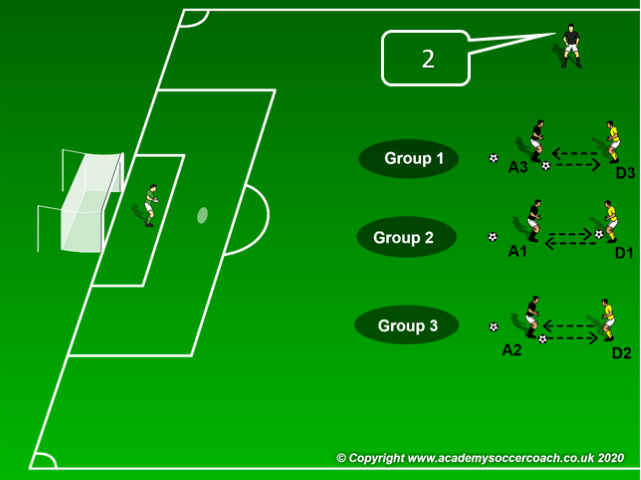
The attackers and defenders in all three groups pass the ball back and forth to each other. The coach calls out a number that represents a specific group. The attacker in this group must quickly turn and dribble the ball positioned one yard behind him. The other two attackers and the three defenders must quickly react to this visual stimulus. The attackers must score after all of them have touched the ball. If this proves to be too hard or slows down the action, remove the constraint that all the attackers should touch the ball before attempting a shot on goal. Instead we can challenge the attackers by having them finish at goal in five seconds or less from the moment the coach calls the player to initiate the attack.
By Philip Cauchi
